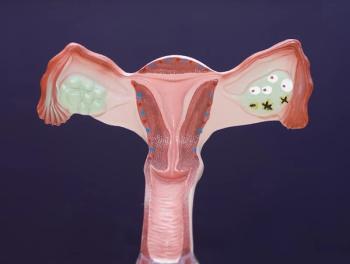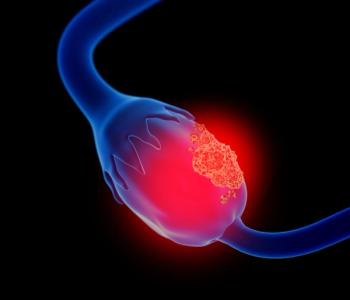
Oncology NEWS International
- Oncology NEWS International Vol 10 No 8
- Volume 10
- Issue 8
Study to Test Amifostine in Cervical Cancer Patients Treated With Combined-Modality Therapy
CHICAGO-Cisplatin-based chemoradiotherapy has greater efficacy than previous regimens in treating cervical cancer, but toxicity needs to be reduced, stated William Small, Jr., MD. He is assistant professor of radiology, Division of Radiation Oncology, at Northwestern University’s Robert H. Lurie Comprehensive Cancer Center in Chicago.
CHICAGOCisplatin-based chemoradiotherapy has greater efficacy than previous regimens in treating cervical cancer, but toxicity needs to be reduced, stated William Small, Jr., MD. He is assistant professor of radiology, Division of Radiation Oncology, at Northwestern University’s Robert H. Lurie Comprehensive Cancer Center in Chicago.
"There is some preliminary evidence that amifostine (Ethyol) may be beneficial in cervical cancer patients," he said. "The Radiation Therapy Oncology Group (RTOG) is about to test this hypothesis in a group of cervical cancer patients at high risk for toxicity."
The RTOG study is expected to be a two-stage design. Stage I will include about 25 patients to establish the toxicity of weekly cisplatin (Platinol) plus extended field radiotherapy. If the expected toxicity is seen in stage I, additional patients will be treated with the addition of amifostine.
Cisplatin-Based Regimens
Bulky stage IIB, IIIB, and IVA cervical cancers are traditionally treated with high dose radiotherapy, which is associated with significant long-term toxicity. "Recently, the results of five randomized trials have been published comparing cisplatin-based chemoradiotherapy to other chemoradiotherapy regimens or to radiotherapy alone. All of these trials noted survival advantages of the cisplatin-based combined-modality arms, but toxicity in the combination therapy groups was greater than in the radiotherapy alone groups," Dr. Small said.
For example, RTOG 90-01 showed a significant early toxicity rate, including 14% grade 3 and 3% grade 4 nausea and vomiting, 12% grade 3 and 5% grade 4 bowel and rectal toxicity, and 57% grade 3 and 16% grade 4 hematologic toxicity.
GOG 120 was a randomized trial of pelvic radiotherapy combined with cisplatin vs cisplatin/5-fluorouracil/hydroxyurea vs hydroxyurea alone. "Both cisplatin-containing arms improved survival," Dr. Small said. Toxicity included 21% grade 3 leukopenia, 2% grade 4 leukopenia, 10% grade 3 GI toxicity, and 5% grade 4 GI toxicity.
Studies With Amifostine
Although only limited clinical trials have been done of amifostine in cervical cancer, according to Dr. Small, these studies have shown the feasibility of combining amifostine with cisplatin and radiotherapy in the treatment of this disease.
Recently researchers have also studied subcutaneous amifostine vs traditional intravenous amifostine in various malignancies. In one trial of 40 patients with pelvic malignancies, three had cervical cancer, Dr. Small reported. Amifostine was interrupted due to a fever/rash syndrome or asthenia in 14.2% of the patients. The mucosal toxicity with radiotherapy alone was 35% grade 2 and 15% grade 3 to 4. With the subcutaneous amifostine there was only 13% grade 2 and no grade 3 to 4 toxicity, "so there seemed to be a significant benefit," Dr. Small said.
The upcoming RTOG trial will be developed to include IV amifostine, since little data on the SC formulation were available at the time the protocol was designed. Dr. Small said that this may be reconsidered, as the trial has not yet opened. Treatment will consist of extended field external beam radiotherapy followed by brachytherapy concurrent with weekly cisplatin.
"A number of the chemoradiotherapy trials delivered amifostine only on the days when the chemotherapy was given. The RTOG trial will give a flat 500 mg of amifostine on the days when cisplatin is delivered and a flat 200 mg when radiotherapy alone is delivered," Dr. Small said.
Articles in this issue
Newsletter
Stay up to date on recent advances in the multidisciplinary approach to cancer.

















































































